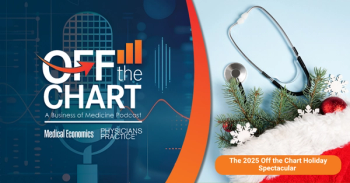
Tackling technology and workflow barriers to successful care management
Connecting the dots for better patient care starts with better data — faster — for physicians, payers and community resources.
Anyone who’s worked with paper charts will remember mystery dots, those colored stickers that varied by office as to diagnosis and follow-up. They’d often flutter to the ground and get stuck on the soles of shoes, flapping and crinkling with each step. This happened a lot in the early days at my primary care practice, especially when we partnered up with an endocrinologist to manually build a population health database and identify diabetes care gaps. The care he delivered was brilliant, but his falling-dot system meant he had limited visibility into the actual number of diabetics he was managing — let alone the most current status of their hemoglobin A1c.
Despite the introduction of
Reevaluating who does what — and when
The CM model focuses on the bigger picture of the patient and requires collaboration across payers, clinicians and community resources to address the entirety of their needs (including behavioral, social and physical). Spanning the entire continuum of care, CM is also — 99% of the time — outside of
When communication to patients comes from a name they recognize — whether that delivery is digital or a simple phone call — there’s inherently more engagement if the outreach is coming from a face they know from their doctor’s office.
The other crux in patient engagement is a lack of personalization that encourages trust and reaches more individuals who need services at the right time in the right place. Almost nothing is as much of a head-smack moment as performing outreach about a hospital visit months after admission and discharge, or asking an individual to schedule a wellness visit when they were in last week.
Some of the most critical information you can give me as a physician is to simply tell me where my patients are. Did they have an event I am unaware of? Are they in an inpatient bed, navigating the post-acute system, or need help with care transitions at a very risky and vulnerable time? Data are critical. Otherwise, connecting the dots is as effective as choosing to drive a car with a compass over a GPS.
At the end of the day, however, whatever gets my patients better care — and a better experience — is worth consideration. Take a Blue Cross Blue Shield (BCBS) policy I worked with, for example. Instead of waiting to receive claim information, the health plan invested in technology that makes use of real-time admission, discharge and transfer (ADT) notifications for members with behavioral health concerns to immediately reach out digitally to those in need with personalized messaging. Care managers for this population were promptly notified with discharge alerts, ADT historical summaries and member engagement metrics. Among engaged members, 64% were successfully enrolled in a mental health program or referred to behavioral health resources.
Real time is really now
For far too long, the health care ecosystem has collected data from disparate sources like the alphabet soup of HIEs, EHRs and ADTs, but not curated it — until now. New, smart data platforms like the one BCBS put to great use can automate ADT alerts basically instantly. Rather than data latency that means we’re notified weeks if not months after a hospital visit, for instance, rules engines can surface in seconds high-risk patients and notify their primary care provider, concurrently putting them into a care manager’s workflow with insights and tasks lists that transcend stacks of PDFs, emails and spreadsheets. Better data, earlier, mean the opportunity to perform earlier interventions and prevent emerging-risk individuals from becoming high risk. Better information also influences more strategic decisions, like which individuals to prioritize with limited CM staff.
More often than not, it can feel as if the tide of regulatory requirements means physicians and other clinicians are constantly swimming upstream. But recent moves by the U.S. Centers for Medicare & Medicaid Services and other payers toward using application programming interfaces (APIs) for even more real-time claims data can further fill in data gaps. CMS’ beneficiary claims data API isn’t exactly plug-and-play — a little engineering is required to make that accessible — but providing access to preadjudicated claims data to some accountable care organizations and managed security service providers is a game changer when it comes to erasing data latency obstacles.
Putting data — not more people — to work
There’s an enormous amount of profitability potential when utilizing predictive analytics to reduce avoidable utilization and associated medical and administrative spending. At Elevance Health, the proof is in the pudding. When the health plan’s adolescent and young adult suicide prevention program determined that other factors like psychiatric diagnoses, chronic pain, headaches and asthma contributed to suicide, leaders used data and analytics to identify those most likely to self-harm. At-risk individuals were then contacted proactively, and suicide rates dropped,
For our patients just as much as ourselves, physicians long for a system where delivery is personalized, predictive and cost-effective. As cliché as “working smarter, not harder” has become, that time is now within arm’s reach — it’s just up to us to give care management the shot in the arm it deserves. By using data as efficiently and ubiquitously as a stethoscope or blood pressure cuff, we can balance business models with care models so that everyone benefits.
Katherine Schneider, MD, MPhil, FAAFP, is the chief medical officer for
Newsletter
Stay informed and empowered with Medical Economics enewsletter, delivering expert insights, financial strategies, practice management tips and technology trends — tailored for today’s physicians.








